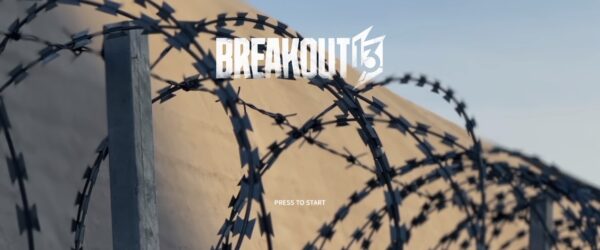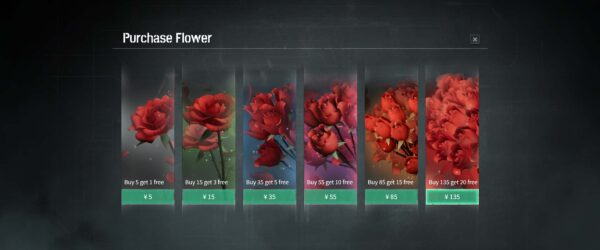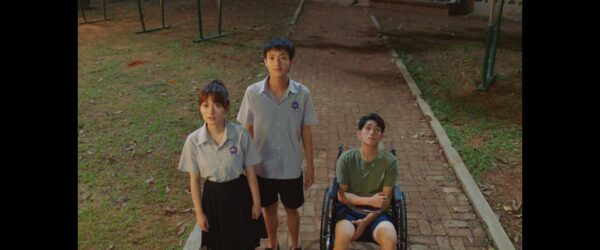One thing I find fascinating is exploring media that wasn’t made for me as an audience. Whilst most content created today contains a lot of similar themes, tropes and ideas (thanks in part to the global reach all content can attain now) regionalised content, I.E. made by and for a specific country and/or audience, showcases things that may never make their way into the mainstream or particular niches I like to explore. This is how I’ve found myself indulging in a lot of Chinese content of late, first and foremost in the TV series Three Body and now in the cult hit of Breakout 13.

You are Zhang Yang, a teen on the cusp of adulthood and one who, in the eyes of his mother, is hopelessly addicted to the Internet and video games. It all comes to a head one day when you’re discovered ditching school to go to an Internet cafe with your friends. Landing you in front of the school’s principal you’re unceremoniously expelled before your mother begs for forgiveness with the promise she’ll do everything she can to make you better. This is how you find yourself heading to a militaristic school headed by a strange man called Principal Yang who says he can make everything right by teaching wayward kids the meaning of gratitude. It’s clear though that this place isn’t everything the shiny brochure promised to be.
Breakout 13 visual style is reminiscent of other FMV games I’ve played in recent memory; the amount of footage required for the branching narratives often necessitating simplistic cinematography and setting. The shots, lighting, framing and camera motion all kept basic and straightforward given that there’s going to be as much footage as a full season of a high budget TV show. Of course there’s beauty in simplisticity, and the lack of cinematographic flair shouldn’t be taken as a criticism, more it’s a necessary part of shooting so much footage on a smaller budget. This also extends to the direct gameplay elements, which are bog standard affairs leveraging pre-built assets wherever possible.

Breakout 13 is a full motion video interactive fiction game, putting you in charge of a protagonist that you’ll drive through the narrative by making choices at critical parts in the story. There’s an array of supporting characters that you’ll develop relationships with as well, and depending on your status with them specific narrative branches may or may not be available to you. Every so often the game will switch into point and click mode, usually putting you in a single room with the task of gathering information or uncovering some secret which you’ll need in the following scenes. It’s much more than your standard interactive movie which, whilst quite interesting, does mean that you’ve got a bit of a grab bag of things all stitched together which don’t necessarily add to the overall experience much.
The telling of the core narrative is done well though, with the right balance struck between interactivity and scenes which you’re just a passenger in. It’s clear that the devs didn’t construct it in such a way that you’d be able to simply guess everything correctly on the first go through, and so you’ll often find yourself going back through scenes (and indeed, back several chapters on occasion) to change your decision in order to unlock a particular narrative that you want to pursue. It can sometimes be hard to figure out exactly what leads to where, even with the narrative map showing potential branches and what mechanic (your choice, relationships, etc.) will allow you to get there.

The point and click puzzle sections are very straightforward, as are pretty much any of the other interactive elements that the game throws at you. With all the puzzle rooms being self contained you’re guaranteed to figure things out pretty easily if you simply interact with all the elements at least once. The game also helpfully lets you know when you’ve exhausted exploring a particular item or section, so you won’t spend unnecessary time trying to figure out if you’ve properly cleared a room or not.
The relationship mechanics are a bit less straightforward, requiring you to undertake actions to improve your standing with a group of people. Most of their motivations are pretty straightforward, however some of their values are really hard to unpick on your first run through which can lead to issues later on. Further to that it appears that the scoring system, which would appear to be a simple thing “1 point for appreciates that, 2 points for really appreciates it, etc.” is actually much more nuanced under the covers. Whilst this is great from a mechanical perspective it’s not really mentioned anywhere but the walkthrough guides so it’s hard to know when you can trade in some friendship points for a better story outcome. I guess this is likely the point, but this does come to a head late in the game.

Breakout 13’s story is a fascinating one, even if it’s told with all the tact and depth of a shonen anime. The characters motivations are all given to you directly through lengthy expositions and the numerous confrontational scenes all have this strange Ace Attorney vibe to them where your characters make logical leaps that I honestly could never have done with the information I had gleaned from the story until that point. Indeed that’s likely an artefact of the story’s construction, the branching narratives never really all rationalised properly leading to some rather strange interactions from the characters that don’t exactly line up with your own individual experience of the narrative up until that point.
The game has some rather hard stops at certain points which you won’t be able to get past without improving your relationship with certain characters. The trouble with this is, of course, that knowing and remembering every point at which you impacted your relationship with someone is horrendously difficult, even when you’re consulting guides to figure out where you can eek out a few points without completely destroying your current narrative arc.
That being said, the characters are easy to empathise with, the villain is given enough time to develop as to be more than 1 dimensional and, whilst it’s still in the realms of a daytime soap with it’s narrative construction, it was still an enjoyable ride while it lasted. There’s 2 main endings and dozens of narrative branches to explore as well, although I’ll be honest and say that once I’d gotten to the end once I was satisfied enough that more exploration wasn’t really on the cards.

Breakout 13 is fascinating experience, one that’s purposefully focused on its core branching narrative whilst throwing a grab bag of other elements in just for the fun of it. It does mean that the game lacks polish in some areas with the puzzles being pretty generic and the game elements feeling like they were ripped directly from asset packs. That being said though it has a certain charm to it and whilst the narrative might not had the depth or emotional impact that the devs might’ve been hoping for it was a great time while it lasted.
Rating: 8.0/10
Breakout 13 is available on PC right now for $29 (for both the base game and DLC). Total play time was 6.2 hours with 60% of the achievements unlocked.



